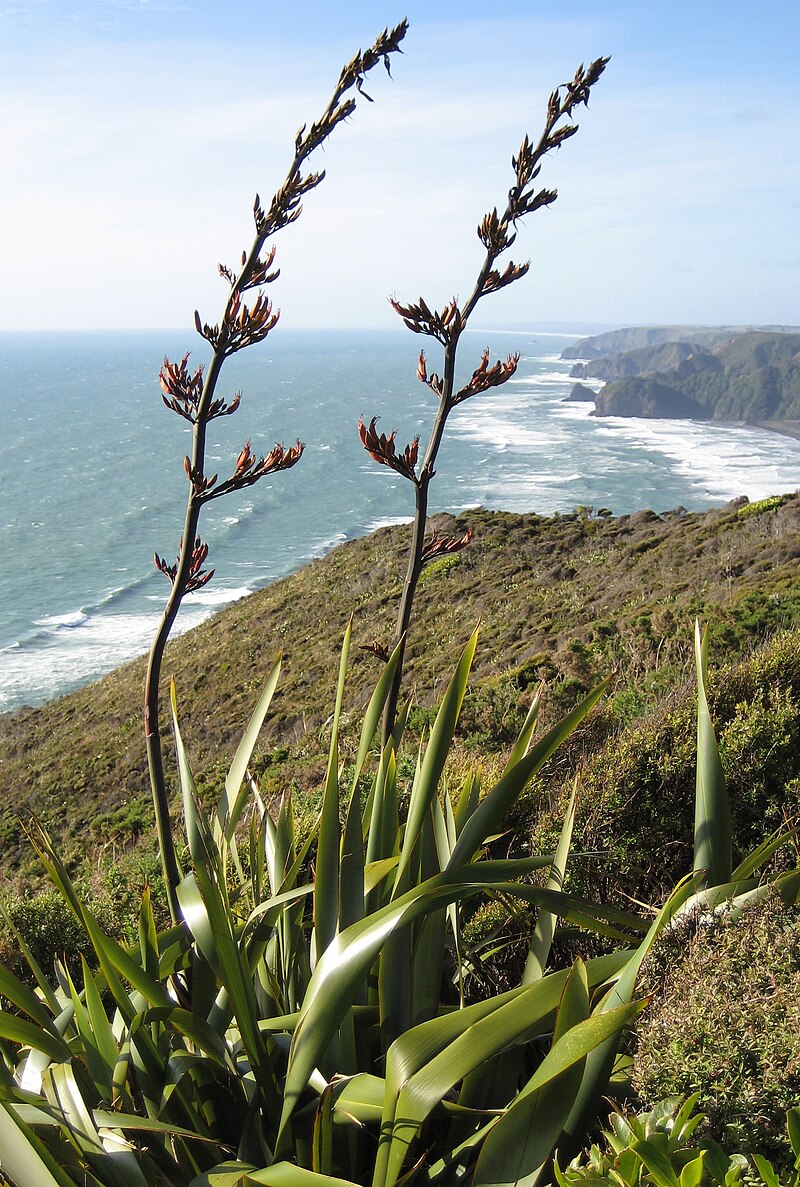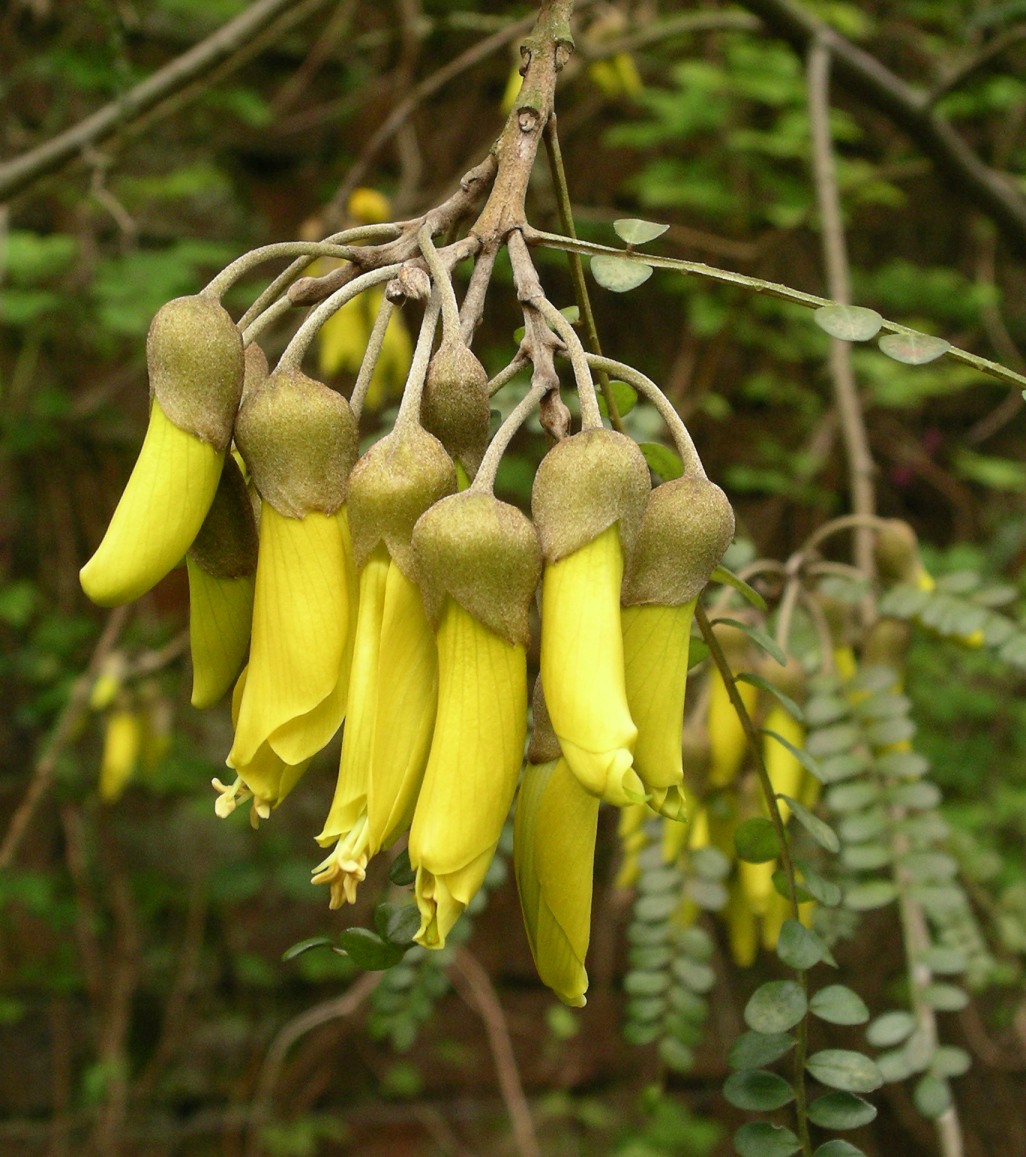Harakeke (New Zealand Flax)
Cordyline australis
Harakeke (Phormium tenax), commonly known as New Zealand Flax, is one of Aotearoa's most recognizable and culturally significant plants. With its tall, sword-like leaves arranged in distinctive fan shapes, it is both a striking landscape feature and a plant of immense practical and cultural value, historically providing Māori with material for everything from clothing and rope to baskets and fishing nets.

Image credit: Phormium tenax on Wikipedia
Quick Facts
| Height | 5-10 meters |
|---|---|
| Water Needs | Moderate |
| Light | Full sun to part shade |
| Frost Tolerance | High |
| Growth Rate | Moderate to fast |
| Lifespan | Several hundred years |
Climate Best Suited To
Growing Requirements
Soil Requirements
Cabbage Tree is remarkably adaptable to different soil conditions:
- Tolerates a wide range of soil types from clay to sandy
- Prefers well-draining soils but can handle occasional waterlogging
- Thrives in moderately fertile soils but will grow in poor soils too
- Can tolerate slightly acidic to slightly alkaline pH
- Handles coastal conditions including salt spray
Light Requirements
Cabbage Trees are sun-lovers that perform best with:
- Full sun for optimal growth and form
- Can tolerate partial shade but may develop a leggier form
- At least 6 hours of direct sunlight daily is ideal
- Northern or eastern exposures work well in garden settings
Water Requirements
Once established, Cabbage Trees are drought-tolerant:
- Moderate watering during establishment (first 1-2 years)
- Drought-tolerant once established
- Can handle periods of soil saturation
- Reduce watering in winter when growth slows
- Signs of overwatering include yellowing leaves and crown rot
Seasonal Care Calendar
Spring
- New growth begins
- Apply a balanced fertilizer if desired (though not usually necessary)
- A good time to plant new specimens or divide offsets
- Monitor for new pest activity
Summer
- Flowering typically occurs in early summer
- Water young trees during extended dry periods
- Look out for infestations of cabbage tree moth caterpillars
- No pruning needed during the growing season
Autumn
- White or cream berries develop and ripen
- Natural leaf shedding occurs (normal part of growth cycle)
- Good time for planting new specimens
- Clean up fallen leaves if desired
Winter
- Generally dormant with minimal growth
- No special winter protection needed in most of New Zealand
- Suitable time for pruning if needed
- Fallen leaves can be left as mulch or removed for tidiness
When to Prune and How Much
Planting Guide
When to Plant
The best time to plant Cabbage Trees is during autumn or spring when soil temperatures are mild and rainfall is typically more reliable. This gives the roots time to establish before extreme heat or cold.
Site Selection
Choose a site with:
- Full sun to partial shade
- Well-draining soil (though adaptable to most soil types)
- Protection from strong winds for young plants
- Adequate space for mature growth (5-10m tall and 2-3m spread)
Planting Procedure
- Dig a hole twice as wide and the same depth as the root ball
- Add compost or well-rotted manure to heavy clay soils to improve drainage
- Position the plant so the crown sits at soil level
- Backfill with soil, gently firming down to remove air pockets
- Create a watering basin around the plant
- Water thoroughly after planting
- Apply a 5-10cm layer of mulch, keeping it away from the trunk
Initial Care
Water regularly during the first growing season, especially during dry periods. After establishment, cabbage trees are quite drought-tolerant but will grow more lushly with regular watering.
Propagation Methods
Cultural History
The Cabbage Tree (Tī kōuka) holds profound significance in Māori culture and history, serving as both a practical resource and a cultural symbol for generations:
Traditional Uses
- Food Source: The roots and young shoots were cooked in earth ovens (hāngī) to produce a sweet food called kāuru, rich in carbohydrates
- Medicine: Various parts were used to treat wounds, diarrhea, and other ailments
- Fiber: The leaves provided durable fiber (muka) for making sandals (pāraerae), waterproof rain capes, and baskets
- Shelter: The leaves were used for thatching temporary shelters
Cultural Significance
- The trees were often planted to mark trails, boundaries, and urupā (burial grounds)
- They served as markers for good fishing and eeling spots
- Their distinctive form made them important landmarks for navigation
- Plantings often indicated the location of marae (meeting grounds) or settlements
- Certain trees were considered tapu (sacred) and associated with tribal histories
Early European History
- Early settlers used the leaves as emergency food for cattle during droughts
- The young inner shoots were sometimes eaten as a substitute for cabbage (hence the common name)
- The trees became iconic features of the developing pastoral landscape
- They were commonly planted as specimen trees around homesteads
Contemporary Cultural Role
Today, the cabbage tree continues to be an iconic symbol of New Zealand identity, featuring in art, literature, and landscape design. The species has come to represent resilience and adaptation – qualities shared by both the plant and the peoples of Aotearoa New Zealand.
Pests & Diseases
Sudden Decline Syndrome
- Cause: A phytoplasma (bacterial pathogen) spread by introduced passion vine hoppers
- Symptoms: Leaves yellow and die from the crown down; leaf bases often rot inside the crown; leaves fall but remain hanging down the trunk
- Management: No cure is available. Remove and destroy affected trees to prevent spread. Plant resistant selections where possible
Cabbage Tree Moth (Epiphryne verriculata)
- Damage: Caterpillars feed on leaves, creating distinctive notched patterns and sometimes completely defoliating young plants
- Symptoms: Semicircular notches around leaf edges; webbing between leaves; caterpillar frass (droppings)
- Management: Natural infestation is rarely serious enough to warrant control. For severe cases on small plants, remove caterpillars manually or apply Bacillus thuringiensis spray
Leaf Spot Diseases
- Cause: Various fungal pathogens including Septoria species
- Symptoms: Small brown or black spots on leaves, sometimes with yellow halos; spots may enlarge and merge in severe infections
- Management: Improve air circulation; avoid overhead watering; remove severely affected leaves; apply copper-based fungicide for valuable specimens if necessary
Root and Crown Rot
- Cause: Phytophthora and other soil-borne pathogens, usually associated with poor drainage
- Symptoms: Wilting despite adequate soil moisture; yellowing leaves; slow growth; soft, discolored tissue at the crown
- Management: Improve drainage; avoid overwatering; ensure crown is not buried too deeply; avoid soil compaction around the base
Other Pests
- Scale insects: Can colonize leaves and stems, causing yellowing and reduced vigor
- Mealybugs: Sometimes infest the crown and leaf bases
- Rabbits and hares: May damage young plants by chewing bark and shoots
Most established cabbage trees are resilient enough to recover from pest and disease issues without intervention. For valuable specimen trees, consult with a professional arborist or horticulturist for specific treatment recommendations.


